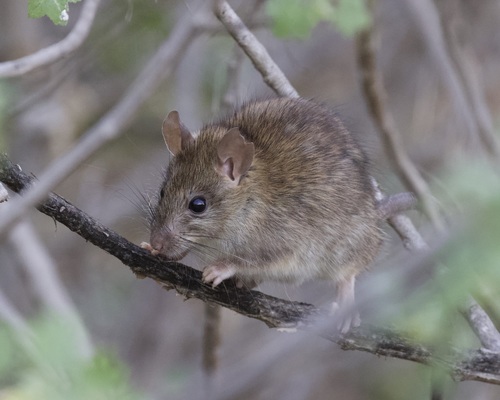
Black Rat
The agile Rattus rattus, or black rat, thrives in urban and coastal areas, utilizing its climbing prowess to navigate environments. This nocturnal rodent plays a crucial role in ecosystems, often influencing seed dispersal and serving as prey for predators, but also poses challenges as an invasive species.
Black-Brown
Color
3 months
Age of Sexual Maturity
Low
Aggression
Least Concern
Conservation Status
Stable
Population Trend
Characteristics
Rattus rattus, commonly known as the black rat or roof rat, is a medium-sized rodent with a slender body, large ears, and a long tail. It is known for its agility and is a proficient climber. This species is nocturnal and often inhabits urban areas, agricultural lands, and coastal regions.
Distribution Range of the Black Rat
Rattus rattus, commonly known as the black rat or house rat, is believed to have originated in the Indian subcontinent. From there, it spread throughout the world, primarily through trade and human activity. Currently, the species has a cosmopolitan distribution, found on every continent except Antarctica, with significant populations in tropical and subtropical regions.
Black Rat's Habitat
Environmental Conditions
Rattus rattus typically inhabits areas that offer food and shelter, such as urban environments, agricultural lands, and coastal regions. They are highly adaptable and can thrive in a variety of conditions, but they prefer warmer climates. They are commonly found in human-made structures like homes, warehouses, and barns, where they can easily access food and nesting sites.
Ecological Niche
Rattus rattus plays a role as both a scavenger and a prey species within its ecosystem. It is omnivorous, feeding on a wide range of food items including fruits, seeds, small animals, and human food waste. This adaptability in diet allows them to exploit diverse environments. Their presence can have significant ecological impacts, including competition with native species, predation on native fauna, and serving as vectors for various diseases.
Copyright @ Nature Style Limited. All Rights Reserved.
 English
English